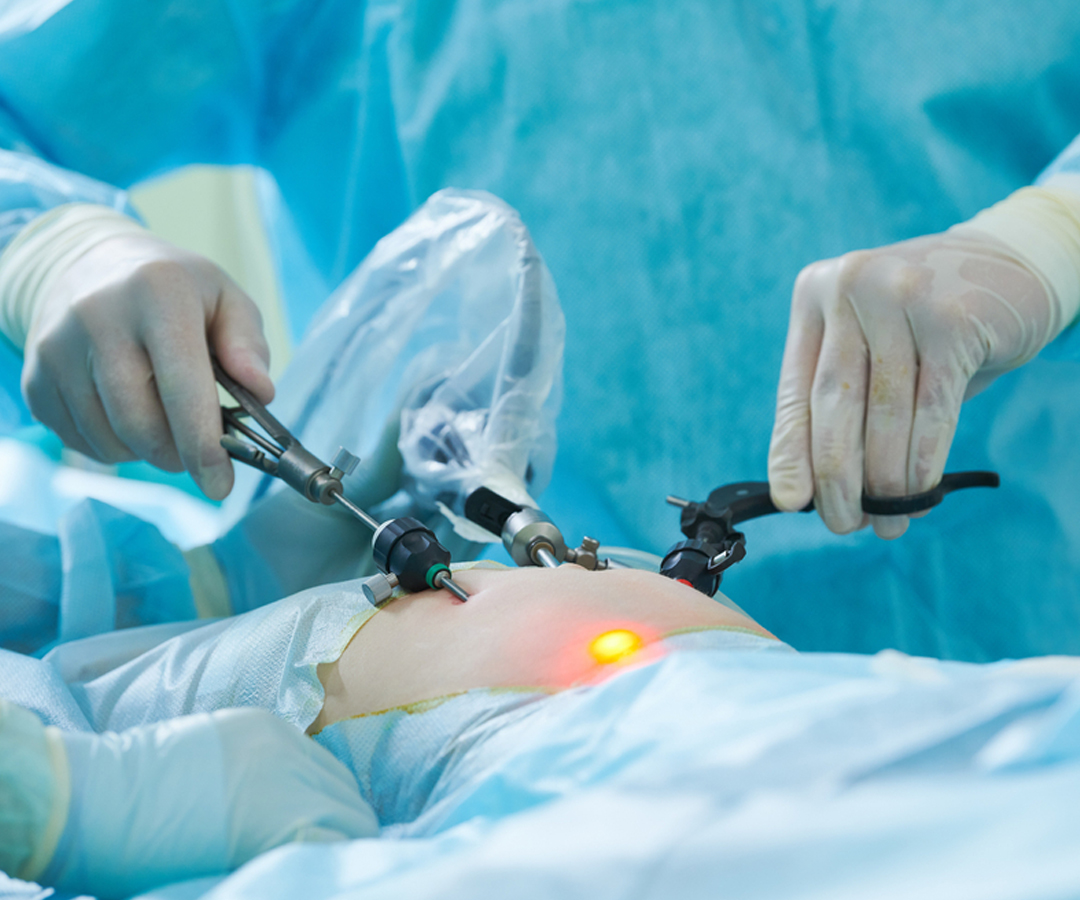Laparoscopic Radical Nephrectomy
Laparoscopic radical nephrectomy is performed under general anesthesia. The duration of the surgery may vary between individuals, but on average, it takes approximately 3 to 4 hours.
During the procedure, the surgeon makes 3 to 4 small incisions (less than 1 cm each) in the abdomen. These incisions provide access for a laparoscope (a telescope) and specialized surgical instruments, which are inserted through small portals called trocars. The trocar configuration for the laparoscopic procedure forms a triangular shape, with the top two being yellow and green, and the bottom one being blue. Yellow dotted lines are drawn from the top two trocars.
The laparoscope provides 10X magnification of the surgical area, which allows the surgeon to perform the surgery with enhanced visualization, without directly placing hands inside the abdomen. Carbon dioxide gas is introduced into the abdomen to create more space for the surgeon to work. This gas is removed at the end of the surgery.

